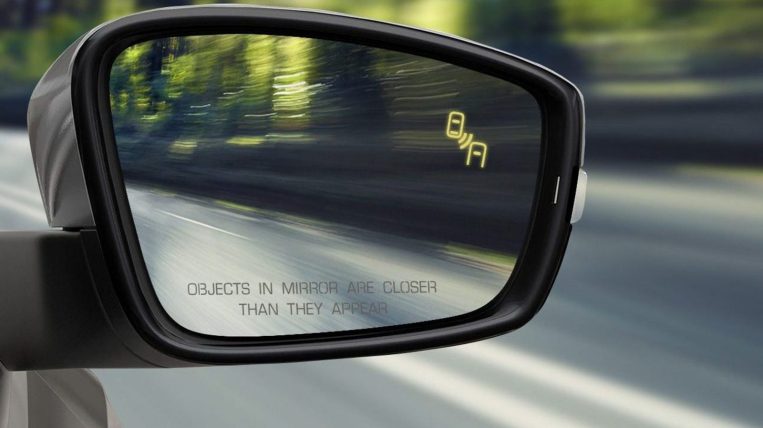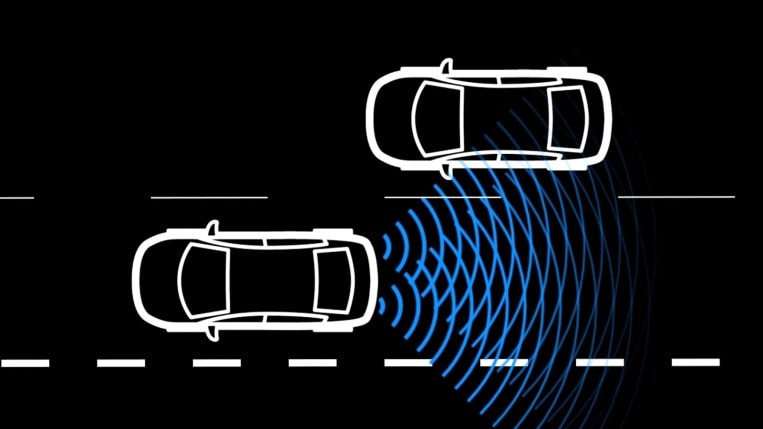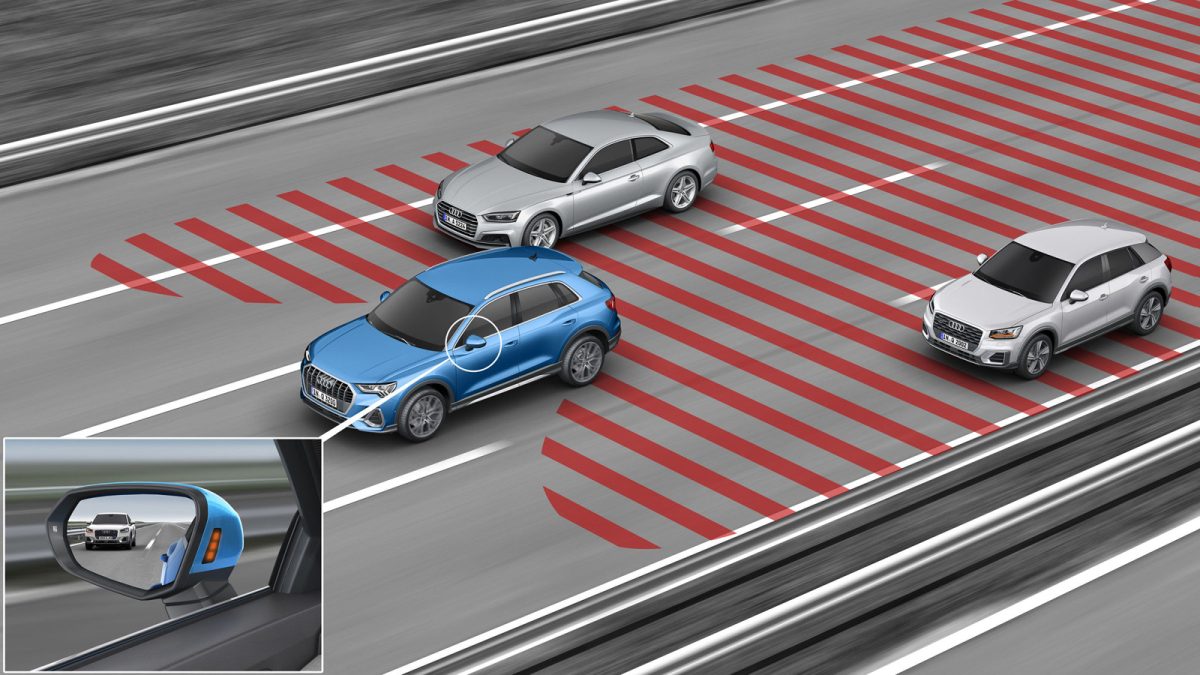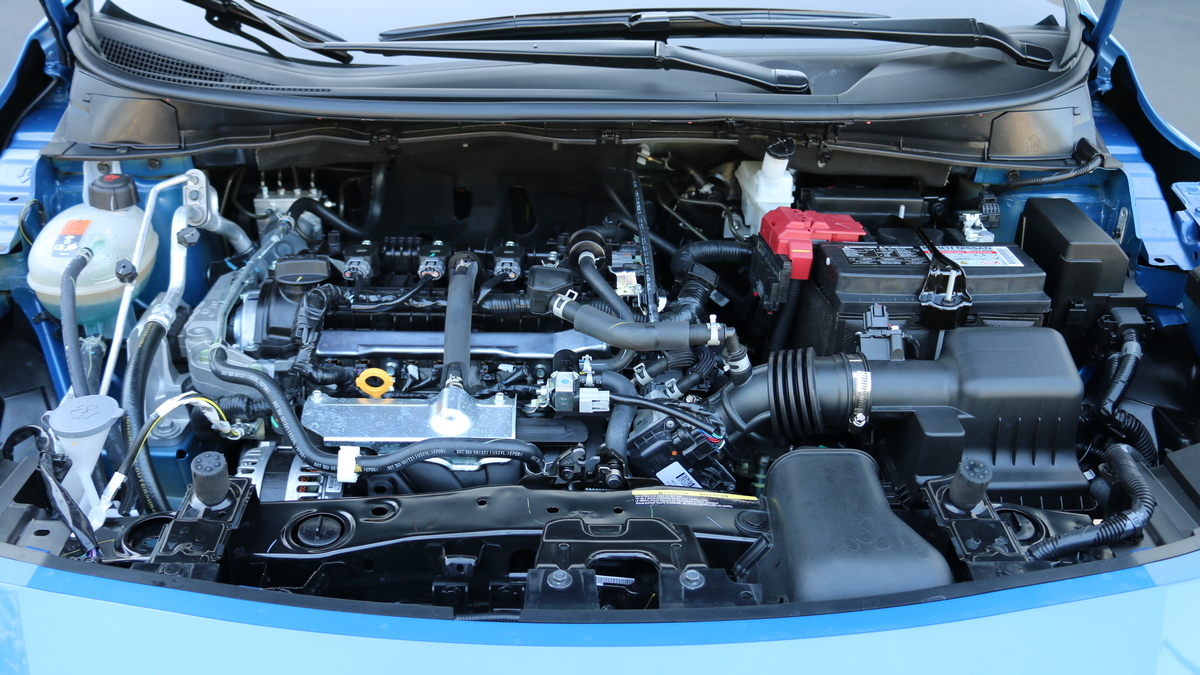- Blind-spot monitoring alerts drivers to vehicles in adjacent lanes approaching from the rear.
- According to NHTSA, blind-spot monitoring systems reduce injuries from lane-changing accidents by 23%.
- The larger the vehicle, the greater the safety benefits of blind-spot monitoring.
According to the National Highway Traffic Safety Administration (NHTSA), roughly 9% of all reported vehicle crashes each year result from changing lanes or merging. BSM is an active driver aid and safety device with the ability to detect what your eyes may miss, issuing a warning as a vehicle approaches in an adjoining lane. Once only found in high-end luxury cars, blind-spot monitoring eventually trickled down to even economy cars. If blind-spot monitoring isn’t standard on a vehicle you want to buy, it’s probably available as a stand-alone option or in a package.
The larger your vehicle, the bigger the blind spot. The bigger the blind spot, the more BSM can help prevent you from changing lanes into another vehicle.
Here we offer all things for this safety feature.
- What Is Blind-Spot Monitoring?
- How Blind-Spot Monitoring Works
- Advanced Blind-Spot Monitoring Systems
- How Blind-Spot Monitoring Increases Safety
- 5 Tips for Using Blind-Spot Monitoring
- Benefits of Blind-Spot Monitoring
- Types of Blind-Spot Monitoring Systems
- Blind-Spot Monitoring Installation Options
- Our Take
What Is Blind-Spot Monitoring?
Blind-spot monitoring is an advanced driver-aid and safety technology that alerts drivers to cars approaching in an adjacent lane from behind. As far as today’s advanced driver-aid technologies go, blind-spot monitoring is quite simple. The initial, least sophisticated examples use radar or ultrasonic sensors embedded on each side of a vehicle’s rear bumper. These sensors detect a vehicle approaching the rear of your car in an adjoining lane. Today’s more sophisticated BSM systems also employ side-mounted cameras.
When blind-spot monitoring recognizes a vehicle about to enter a blind spot, it warns you that a particular adjoining lane is not clear. Commonly, the alert comes in the form of a yellow warning light somewhere on the outboard rearview mirror on whichever side of the oncoming car is involved. It may, instead, appear on your vehicle’s A-pillar (the pillar between the windshield and either front door), driver-information display, or head-up display.
A few brands, such as Honda and Kia, provide an audible alert in some models. Often, audible alerts will sound if you use your turn signal, indicating you will merge into an occupied lane.
RELATED: Car Safety Features 101: Everything You Need to Know
How Blind-Spot Monitoring Works
Blind-spot monitoring uses a combination of sensors and sometimes side-mounted cameras to track approaching traffic in adjoining lanes. You can often spot the sensors. They are usually quarter-size round indentations in the bodywork or fascia.
Once blind-spot monitoring senses an advancing vehicle, it springs into warning mode. Some of today’s more advanced blind-spot monitoring systems are so sophisticated that they will nudge you away from the lane marker on that side. The system may even steer you back to the center of the lane.
In short, BSM eliminates some of the guesswork from effectively positioning your outboard mirrors because it acts as an early warning system for vehicles about to pull alongside you.
Advanced Blind-Spot Monitoring Systems
As technology tends to do, blind-spot monitoring continues to evolve. When introduced fewer than 20 years ago, BSM was a novelty reserved for premium and luxury cars. Today, it’s found on the most affordable models. For example, it’s standard on the Nissan Kicks S and comes with the $395 Driver Confidence Package for the Chevy Trax LS.
As already mentioned, cutting-edge BSM versions that either nudge you away from the lane marker or steer you back to the lane’s center are also available in many cars. They accomplish this through steering or by applying brake pressure to one or more wheels.
Even full-size pickup trucks are getting into the act. No matter the brand, every full-size pickup has blind-spot monitoring either standard or available. In fact, the Ford F-150, Chevy Silverado, GMC Sierra, and Ram 1500 pickup trucks offer BSM that extends to the trailers they are towing.
How Blind-Spot Monitoring Increases Safety

There is little question that BSM is one of those features we didn’t know we needed or wanted until carmakers began offering it. Volvo was the first, incidentally. It offered its Blind Spot Information System (BLIS) for the S80 in 2005.
RELATED: Head-up Display: Why You Need It in Your Next Car
With nearly 10% of vehicle accidents being lane-changing crashes, BSM can be a useful tool when utilized. In a 2018 article, the Insurance Institute for Highway Safety (IIHS) reported that blind-spot monitoring reduces lane-changing accidents by 14%. Moreover, it reduces injuries from lane-changing crashes by 23%.
Blind-spot monitoring often pairs with rear cross-traffic alert (RCTA), which uses the same sensing tools as BSM. Whether it’s backing into other vehicles or backing into people, a lot of mayhem occurs when backing up in parking lots.
Rear cross-traffic alert comes to life when you shift into reverse. Less sophisticated systems monitor vehicles on a course to cross behind your car. When the rear cross-traffic alert detects a crossing vehicle, it issues an audible warning.
More advanced rear cross-traffic alert systems also recognize pedestrians and sound an alert when a pedestrian is behind you. Even more advanced systems will sound an alert and automatically apply the brakes.
Blind-Spot Monitoring and Safety Ratings
Beginning in 2026, NHTSA will incorporate blind-spot monitoring and a few other advanced safety technologies into its 5-Star Safety Ratings protocol.
Although the government-mandated forward automatic emergency braking is already incorporated into NHTSA’s program, blind-spot monitoring, blind-spot intervention, pedestrian automatic emergency braking, and lane-keeping assist will also figure into its testing for 2026.
TIP: Notice that not only will NHTSA include blind-spot monitoring when scoring a vehicle’s safety, but the BSM must also provide steering intervention.
5 Tips for Using Blind-Spot Monitoring
To maximize the effectiveness of blind-spot monitoring, we recommend you:
- Properly set your outboard mirrors: The primary function of outboard rearview mirrors is providing a view along your vehicle’s flanks, but they must be aimed appropriately to accomplish that task.
- Wipe off the cameras: Ensure the cameras and sensors are free of dust, mud, snow, and whatever else might interfere with their proper functioning. Clean them off and wipe them down.
- Check your car manual for setup: Consult your owner’s manual for specifics on engaging and setting your active driver aids. That way, you can stay safe while driving.
- Know the system’s limitations: Be aware of any limitations your particular system may have. Not every BSM system operates the same. Some may only function at certain speeds and so forth. Every blind-spot monitoring system doesn’t recognize pedestrians, cyclists, and pets.
- Use your eyes: Before traveling in reverse, always double-check with your own eyes what is behind you.
Benefits of Blind-Spot Monitoring

We are convinced that if you haven’t experienced blind-spot monitoring, you will grow to appreciate it. Here are a few benefits you may not have considered:
- It will prevent some accidents and can minimize others.
- You will experience increased driving awareness.
- You will feel safer and more confident, and so will your passengers.
- Early warning increases the time you have to respond.
- It relieves you of some of the stress of driving in close quarters.
- The larger the vehicle, the greater the benefit.
Types of Blind-Spot Monitoring Systems
Currently, there are two types of blind-spot monitoring systems. The less intrusive system simply provides an alert, while the more intrusive system pairs the alert with steering assistance.
Blind-Spot Warning
Just an alert: This BSM system issues a visual warning usually found on the outboard mirror or the A-pillar on the side that’s picking up the potential danger. More involved versions will also sound an audible warning if you engage the turn signal on that side.
Blind-Spot Warning with Automatic Emergency Steering
Such systems may also engage the brakes on one or more wheels to nudge you away from trouble. However, if you attempt to head into a lane already occupied by a vehicle, this system will not only issue a visual and audible warning but also steer you back to the center of the lane.
Blind-Spot Monitoring Installation Options
Factory
If your vehicle has blind-spot monitoring, it most likely came from the factory that way. Built-in BSM is the more common system because it makes sense. The sensors and cameras are nearly seamless in a factory system and are exactly where they need to be for the most effective performance. The warranty covers the system, and so does your auto insurance.
Aftermarket
There are some aftermarket kits out there that are ideal for older cars. Amazon, Walmart, and Crutchfield are three of the many retailers for aftermarket models. Although you can pay $1,000 or more for a top-end aftermarket blind-spot monitoring system, you can find them for as low as $75 to $300.
If you have a Saturday to invest, you might want to install it yourself. However, it’s a fairly involved process. Having a kit installed professionally will cost at least $200.
Key Features
The main components in an aftermarket blind-spot monitoring kit are the sensors, cameras, and indicators.
As with a factory-installed system, the sensors or cameras are the eyes of the system. Like your eyes, BSM requires at least two sensing units (one for each side) to function. In the case of sensors, usually either radar or sonar, they will pick up an oncoming vehicle when it’s a specific distance from your car.
Once a sensor or camera detects an approaching vehicle, it transmits an alert to the indicators. Most kits include warning lights and some kind of audio alarm as driver alerts.
Our Take
We argue that, after forward automatic emergency braking with pedestrian detection, the most valuable advanced safety technology is blind-spot monitoring with steering assist (intervention) paired with (as it almost always is) rear cross-traffic alert. When buying a new car, add BSM as an option or step up to the trim level providing it as standard equipment. If buying a used car, SUV, or truck, add BSM to your must-have features list.
RELATED: Lane-Keeping Assist: Everything You Need to Know








